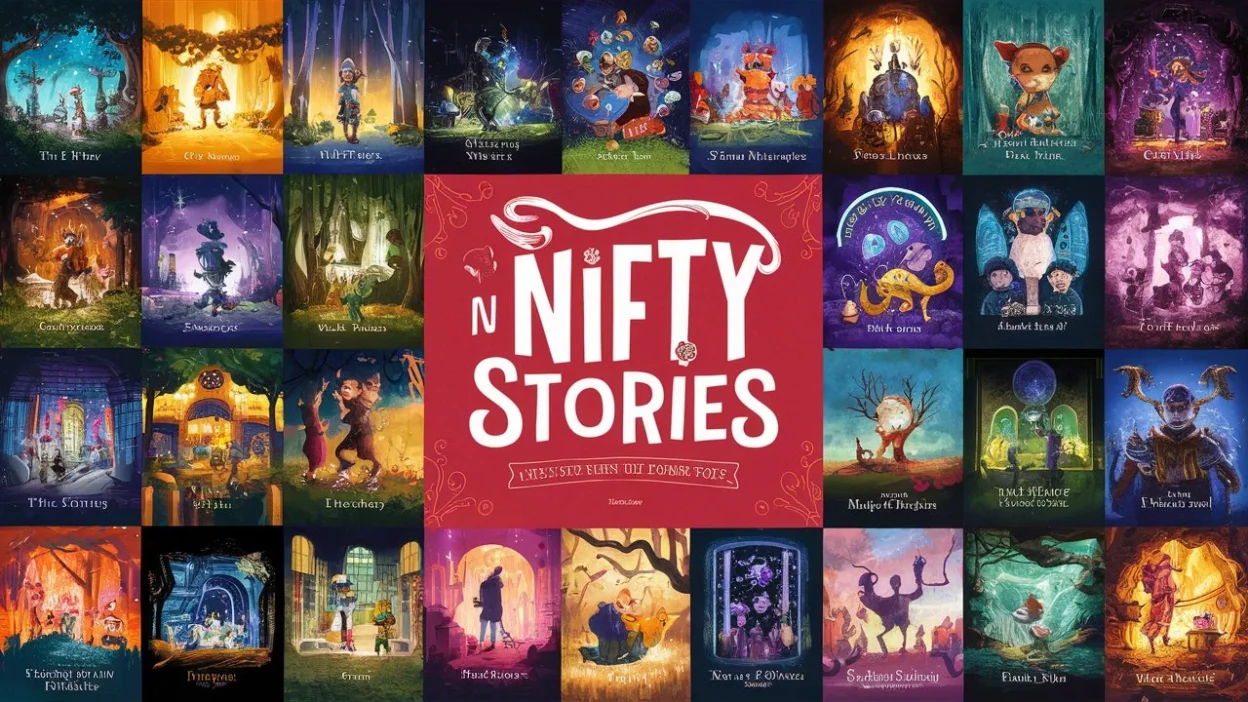Life in 2025 is all about discovering entertainment that’s hot, trending, and refreshing. If you’re an adult searching for the best nifty stories to spark your imagination, you’re in the right place.
These tales are crafted with creativity, fun, and a touch of wisdom, making them perfect for readers who want engaging and easy-to-understand narratives. Whether you enjoy clever twists, unique plots, or simply the charm of short fiction, these top nifty stories will give you both joy and insight. Let’s dive into the first three.
Story 1: The Clockmaker’s Secret
In a quiet town, there lived an old clockmaker named Elias. His shop was small, filled with ticking sounds that echoed like a heartbeat. People came to him with broken clocks, but his real gift wasn’t fixing timepieces—it was adding something special to them.
Every clock Elias repaired ticked differently. One customer claimed her clock whispered encouragement when she felt low. Another said his pocket watch reminded him to take deep breaths when he was stressed. Rumors spread that Elias’s clocks weren’t just mechanical—they were magical.
One day, a young woman named Clara brought him her grandfather’s dusty, silent clock. Elias worked all night, carefully polishing gears and tightening springs. By morning, the clock chimed again, but Clara soon discovered it did more. Whenever she faced hard choices, the clock pointed its hands toward the option that would bring her peace.
Clara thanked Elias, but he simply smiled. “The magic isn’t in the clock,” he said. “It’s in the belief that time can guide us.”
Moral: Sometimes, what we believe in gives us the strength to find the right path.
Story 2: The Street Painter
Every weekend, a mysterious painter appeared on Maple Street. He didn’t sell his art—he simply painted on sidewalks, walls, and corners, leaving bursts of color across the gray city.
At first, people ignored him. But soon, passersby started noticing his work. Flowers bloomed across bricks, oceans flowed on pavements, and even dull benches became works of art. The city began to change—not just in appearance, but in spirit. Strangers started smiling at one another, inspired by the painter’s creations.
A journalist once asked him why he never signed his name. The painter chuckled. “Because beauty isn’t about recognition—it’s about connection.”
Years later, though his identity was never discovered, the city thrived on the joy he left behind. His art faded with time, but the kindness it sparked stayed forever.
Moral: True creativity inspires not for fame, but for the joy it brings to others.
Story 3: The Librarian’s Hidden Room
Margaret had worked in the town library for 40 years. She knew every shelf, every book, and every secret the old building held. At least, that’s what she thought.
One rainy evening, while locking up, she noticed a faint draft coming from behind the poetry section. Pushing against the shelf, she discovered a hidden door. Inside was a small, dimly lit room lined with journals. Each was filled with handwritten stories by past visitors—dreams, fears, confessions, and even wishes.
Margaret began reading them one by one. Some made her laugh, some made her cry, and others gave her hope. Realizing how powerful the written word could be, she decided to open the hidden room to the public. Soon, people came not just for books, but to add their own stories to the collection.
The library became a place of shared voices, where everyone’s story mattered.
Moral: Every story, no matter how small, deserves to be heard.
Story 4: The Forgotten Violin
In a dusty attic, Daniel stumbled upon his grandfather’s violin. Its strings were loose, the wood scratched, and the bow nearly broken. Though Daniel had never played an instrument before, something about the violin called to him.
He took it to a restorer, who carefully repaired it. When Daniel finally placed the bow across the strings, hauntingly beautiful music filled the room. It was as if the violin had been waiting decades to sing again.
Intrigued, Daniel practiced every night. Soon, the melodies became so moving that neighbors gathered outside his window to listen. One evening, a stranger knocked on his door. With tears in her eyes, she said the music was the same song her mother used to play to comfort her.
Daniel realized the violin carried more than sound—it carried memory, love, and history. And by playing it, he wasn’t just making music—he was keeping a legacy alive.
Moral: Some treasures don’t shine in gold but in the stories and memories they carry.
Story 5: The Café of Second Chances
On a small corner street stood an old café that few noticed. Its sign read “The Café of Second Chances.” Inside, the aroma of coffee mixed with warmth and laughter.
The owner, Mrs. Harper, had a special gift: she always knew what each customer needed most. To one man, she offered a cup of courage in the form of black coffee and gentle words. To a lonely woman, she served tea with a sprinkle of comfort and introduced her to new friends. To a struggling writer, she brought a notebook alongside his espresso.
People came for the drinks but stayed for the magic of feeling understood. Soon, word spread, and the café became a safe haven for those ready to try again.
Mrs. Harper never explained how she knew what each person needed. She only smiled and said, “Everyone deserves a second chance—and sometimes, it begins with a warm cup.”
Moral: Small acts of kindness can give people the courage to start over.
Story 6: The Midnight Train
Leo loved exploring abandoned places, and one night he wandered to the edge of town where an old railway sat silent. A single train car stood on the tracks, glowing faintly under the moonlight.
Curious, he stepped inside. To his shock, the train came alive. Lights flickered on, and the car filled with passengers dressed in clothes from different eras—some from the 1800s, others from the 1950s. They smiled, welcomed him, and offered him a seat.
The train began moving, but outside the windows wasn’t the town—it was a dreamlike world filled with glowing stars, endless fields, and oceans of light. The passengers shared stories of their lives, regrets, and joys, as if offering him wisdom from beyond time.
When the train stopped, Leo found himself back on the tracks, alone. The car was gone, but the lessons remained.
Moral: Wisdom often comes when we least expect it, if we are open to listening.
Story 7: The Painter of Dreams
Elena was an artist who could never sell her work. People told her it was “too unusual,” filled with shapes and colors they didn’t understand. One night, she fell asleep at her easel, and when she woke, her canvas had changed. The painting wasn’t of her imagination anymore—it was of someone else’s dream.
Soon, people came from everywhere, shocked to see their own dreams captured in her art. A young boy saw his dream of flying. A soldier saw the nightmare he could never speak of. A widow saw her late husband smiling at her again.
Elena finally understood her gift: she wasn’t painting for herself but for others. Her art became a mirror of the human heart. And for the first time, the world embraced it.
Moral: The truest art connects us to each other’s inner worlds.
Story 8: The Paper Boat Messenger
Every morning, children at the riverbank found tiny paper boats drifting toward them. Each boat carried a handwritten note—encouragements, jokes, riddles, even little life lessons. Nobody knew where they came from.
The mystery grew until one curious boy followed the stream to its source. There he found an OLD man folding boats in silence. When asked why, the man smiled and said, “Because words can travel farther on water than in silence.”
The boy promised to keep the secret but began helping him. Years later, when the old man passed, the boy carried on the tradition, sending daily boats filled with hope.
Generations later, the river was still alive with floating words of kindness.
Moral: Small gestures can ripple through time, leaving hope for those who come after.
Story 9: The Market of Forgotten Things
Hidden in an alley, there was a strange market that opened only at dusk. Its stalls sold unusual items—not antiques or treasures, but objects people had lost and forgotten. A child’s teddy bear. A single earring. A diary with missing pages.
One evening, a man named Victor stumbled into the market. Browsing the stalls, he froze when he found his father’s old pocketknife, lost years ago. The vendor told him, “Things we lose are never truly gone—they wait for us to find them again.”
Victor bought the knife, holding it tightly, feeling as though he was holding his father once more.
The market disappeared when dawn came, but Victor carried his rediscovered memory with him forever.
Moral: What we lose may find its way back when we need it most.
Story 10: The Star Collector
Nina lived in a quiet village where nights were dark and lonely. She had one strange habit—every night, she placed glass jars on her windowsill. Villagers laughed, thinking she was silly.
But one evening, her jars began to glow. Somehow, she had caught pieces of starlight. She gave the jars to people who were struggling—the sick, the grieving, the forgotten. Each jar lit up their homes, warming hearts with its soft glow.
Years later, the village became famous, not for wealth or power, but for being the place where light was shared freely. And Nina, the girl who once seemed foolish, became the symbol of hope.
Moral: True light is not what we keep, but what we share with others.
Conclusion
These 10 nifty stories prove that simple tales can carry deep wisdom. Whether it’s magic hidden in a clock, kindness flowing in paper boats, or dreams captured on canvas, each story reminds us that inspiration can be found anywhere.
For adults seeking the top, best, and trending nifty stories in 2025, this collection offers not only entertainment but also gentle lessons for everyday life. Let these stories encourage you to see wonder in the ordinary and hope in the unexpected.




